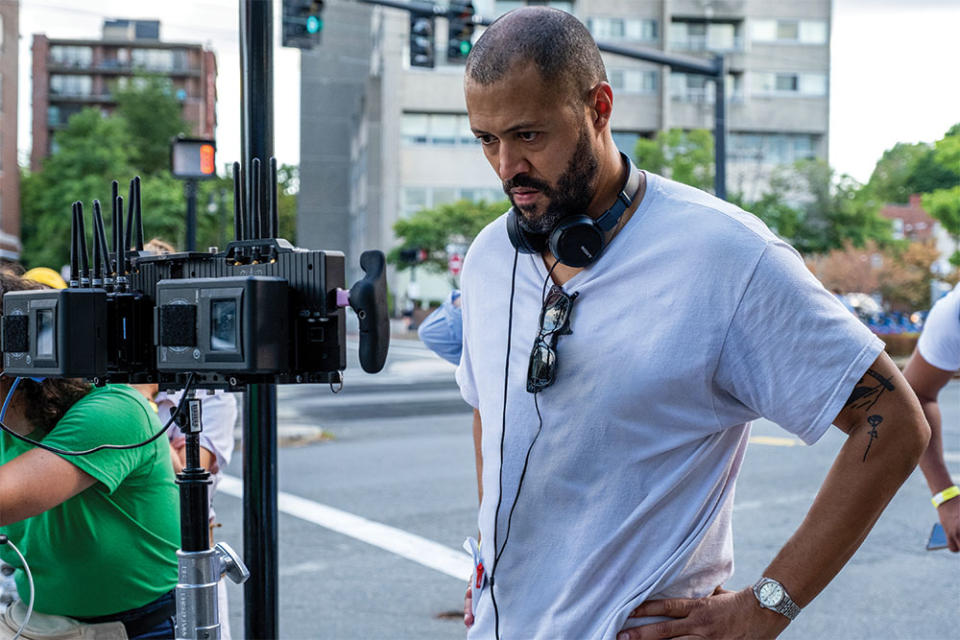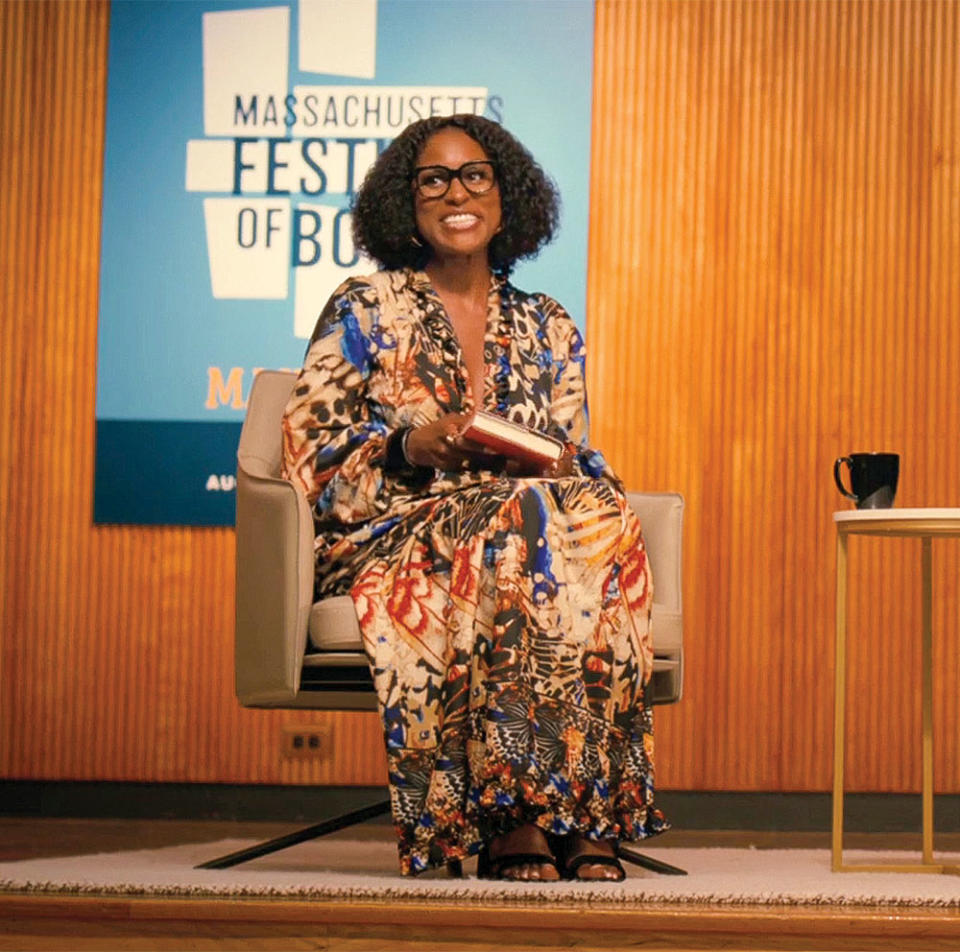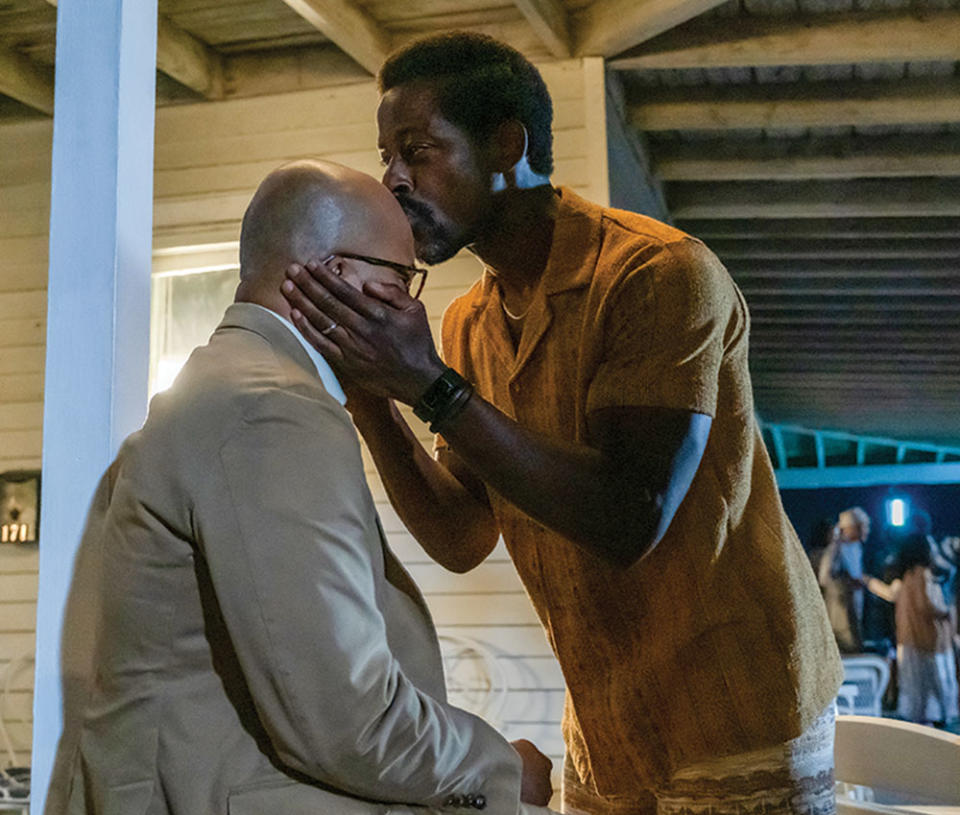The Making of ‘American Fiction’: “Tragedy and Comedy at the Same Time, and Often the Same Day”
- Oops!Something went wrong.Please try again later.
- Oops!Something went wrong.Please try again later.
- Oops!Something went wrong.Please try again later.
- Oops!Something went wrong.Please try again later.

In late 2020, Cord Jefferson, a journalist turned TV writer, was in a state of creative dismay.
He had just gone through a crushing professional disappointment: A big-budget series project he had spent months writing and developing for Apple TV — Scraper, based on his first career, as a writer and editor at Gawker Media — was tantalizingly close to going into production. But then, that fall, Apple abruptly pulled the plug.
More from The Hollywood Reporter
Critics Choice Awards: Harrison Ford Gets Emotional Accepting Career Achievement Honor
Critics Choice Awards: Read America Ferrera's Inspiring Acceptance Speech in Full
Critics Choice Awards: 'Oppenheimer,' 'Barbie,' 'The Bear,' 'Beef' Win Big
It was in the aftermath of this moment — “a dark period,” as he puts it — that Jefferson happened upon a copy of Percival Everett’s 2001 novel Erasure.
“It was as exciting as it was uncanny,” Jefferson says of his experience reading the book over Christmas in 2020. “It felt like someone had decided to write a novel specifically addressing everything I was going through and thinking about for the past 20 years.”
American Fiction, Jefferson’s adaptation of Erasure, tells the story of Thelonious “Monk” Ellison (played by Jeffrey Wright), an upper-middle-class author of sophisticated literary novels who grows frustrated when he realizes that part of the reason he can’t sell his latest book is because the publishing establishment has deemed his work not “Black” enough. Compounding his angst, another novel, We’s Lives in Da Ghetto, has just become a critical and commercial sensation. Meanwhile, Monk’s sister (Tracee Ellis Ross) dies unexpectedly, forcing him to return home to care for his mother (Leslie Uggams), who is suffering from dementia. While also juggling a new romantic relationship with a neighbor (Erika Alexander) and coming to terms with his recently divorced, just-out-of-the-closet brother (Sterling K. Brown), Monk decides one night — out of spite — to write a book filled with every outlandish and offensive Black stereotype he can conjure. He titles the work My Pafology, signs it under the pseudonym Stagg R Leigh (a winking reference to 1920s notorious figure Stagger Lee), and insists that his agent send it out to the publishing houses. But instead of recognizing the work as a satirical rebuke, the establishment loves it — “so brave, so timely” — and Monk-slash-Leigh, self-styled as a convict on the run, is soon offered a $1 million book deal, by far the largest of his career.

“The themes about professional life and what it means to be a Black writer, and the restrictions that are put around the things you can and can’t write about — that all resonated with me deeply,” Jefferson recalls of his first reading of Erasure.
In 2014, near the tail end of his eight-year career as a journalist, Jefferson had published an essay for Medium called “The Racism Beat,” with the subtitle “What it’s like to write about hate over and over and over.” The piece explored his complicated feelings and growing frustration with the way editors were constantly approaching him to write about racist incidents and stories of Black trauma.
“It just felt like my job had become this revolving door of Black tragedy,” he says, “and that was what people thought was the best use of my time — and the only interesting and important thing we could say about Black lives.”
When Jefferson transitioned to TV writing later that same year, he was initially enthusiastic to be working in the realm of fiction, where he would be able to “write about any kind of Black person I could imagine, doing anything in the world.” Although his career progressed at an impressive clip — with credits on shows including The Nightly Show With Larry Wilmore, Master of None, The Good Place and Succession, with an Emmy win for his work on the HBO limited series Watchmen — he soon began to feel the familiar, stultifying expectations from the entertainment industry.

“I had executives give me notes about making characters ‘Blacker,’ people approaching me to write movies about a slave or drug dealers,” he explains. “I was just taken aback at how, even in the world of fiction, there was still this rigid limitation to what people thought Black life looked like. And there were these expectations that, as a Black artist, this is what you’re good for — and not really anything else.”
On top of Erasure’s sharp satire, Jefferson also deeply connected with the book’s family drama, which bore surprising similarities to his personal life.
He explains: “I also have two siblings and we’ve had a complicated relationship at times; we have an overbearing father figure much like in the book; and my mother didn’t suffer from Alzheimer’s, but she died of cancer about eight years ago and, like Monk, I moved home to help take care of her toward the end of her life.
“The Venn diagram between Monk’s life and my life started to become a circle,” he says. “By the time I got to the end of the book, I was thinking, ‘This is exactly what I’ve been looking for.’ ”
For several years, Jefferson had been encouraged by industry peers to consider directing his own writing. With American Fiction, he felt like he not only was ready to step behind the camera but needed to do so. “I knew the story and the characters on such a fundamental, molecular level, so I felt they could guide me through all my decisions on the technical stuff,” he says.

Erasure would have been a daunting task for any first-time feature filmmaker. The script blends scathing social and industry satire with grounded human drama, reading like an inventive blend of everything from Robert Townsend’s pioneering Hollywood Shuffle to Robert Altman’s The Player and Kenneth Lonergan’s Manchester by the Sea — with a bold swerve into Charlie Kaufman-esque metafiction in the final act.
Editor Hilda Rasula, who would turn out to be one of Jefferson’s closest collaborators on American Fiction, recalls being impressed by the script’s “clarity and sense of purpose” when she first received a copy in 2021.
“My other initial impressions were that it blended comedy and drama in an interesting and weird way, hitting a lot of strange peaks and valleys tonally,” she explains. “It reads easily because Cord is such a good writer, but I knew it wasn’t going to play so easily onscreen — it was going to take a lot of work to get those tonal pivots right.”
Says Jefferson, “On the one hand, you have Monk complaining to his colleagues and his agent that these tropey, stereotypical stories flatten Black people’s lives and offer no complexity, nuance or variety. On the other hand, in the second narrative that’s running in parallel to this, you have Monk’s personal life — which is exactly the kind of complex, nuanced story of Black family life that we don’t get to see in movies. So, more than just the satire, we sort of get Monk’s dream of the kind of story he wishes he could tell.”

Brown, who plays Cliff, Monk’s irascible but irresistible younger brother, says he was convinced that Jefferson would handle the project with aplomb despite being a newcomer to features.
“[Cord] had sent a wonderful letter attached to the script, talking about the kind of movies that he wanted to see in the world and his understanding of Percival Everett’s novel,” Brown recalls. “I felt that if he understands this material so well, then he’s going to understand how to bring it to fruition, too.”
Brown was also grabbed, upon first reading, by the script’s title.
“I don’t think anyone had ever sent me a script with a title like Fuck,” he says, laughing.
Midway through American Fiction, protagonist Monk grows exasperated that his publishers haven’t picked up on the fact that My Pafology was intended as a gag, so he decides to try to blow up the deal by insisting — over the phone from his agent’s office, while pretending to be Stagg — that he’ll continue with the book’s publication only if he can retitle it Fuck. After putting him on brief hold so they can discuss the demand, the publishing executives return to the call to say that they love this decision, describing it, in all earnestness, as “brave.”
Throughout the film’s development and production, Jefferson planned on titling his own adaptation Fuck, too.
“ ‘Fuck’ was on the clapper and ‘Fuck’ was on everybody’s wrap-day T-shirt. It was going to be my hill to die on,” Jefferson says. “I was like, ‘No, it’s Fuck — it’s funny and it makes sense when you watch the movie.’ ”
It wasn’t until deep into postproduction that Jefferson finally agreed to a title change. “[Producers] came up to me and said, ‘Look, we can give you a million reasons why there’s going to be distributors who won’t put it in the theater, but the number one problem is that when people go to google “Fuck movie,” they are not going to find our film,’ ” Jefferson recalls, laughing. “That was a pretty good practical consideration.”

During the editing phase, Rasula had used jazz classics from the Blue Note era as temp music, which felt appropriate for a film featuring a protagonist named after one of the period’s undisputed jazz greats. When composer Laura Karpman came on board to write the film’s score, there was much discussion around whether they should employ at least one Thelonious Monk classic (“Ruby, My Dear” was a lead contender).
“Of course, the temp music had a really good vibe to it, because it’s just fabulous music, but it wasn’t quite working as a film score,” Karpman says. “Ultimately, we decided to go with an original tune that I’d written, because we needed something with the flexibility to cover all the quick turns and diverse emotional beats of the movie.”
Of her lovely, piano-led final music for the movie, Karpman says, “It’s constructed like jazz, but it has the emotional arc to function as a film score.” She also added some blocky left-hand seventh chords to her playing for the protagonist’s theme — a sly nod to the compositional style of his jazz legend namesake.
Visually, Jefferson and his director of photography, Cristina Dunlap, strove to counterbalance some of the movie’s more outrageous moments of comedy. “Even though the film is a satire, we didn’t want it to look like a comedy, or to ever feel like a farce,” Dunlap says. “We wanted it to be more intimate and more about visually transcribing the emotion Cord had written into the script — especially within the family dynamics.”
So, even though they were shooting on spherical lenses rather than anamorphic, they decided to shoot in the widescreen 2:35 aspect ratio. “We were able to hold more people in the frame at the same time this way, while also staying tight, so we could see what they were emoting,” she adds. “The goal was to communicate a more serious drama.”
The subtlety and sophistication of Wright’s performance in the lead also dictated the camerawork to an extent. “Jeffrey has that ability where he can raise an eyebrow and it feels like he’s shooting a dagger,” Dunlap notes. “My Steadicam artist and I were always saying how we just kept wanting to float closer and closer — he really draws you in that way. There are a lot of moments where we end up quite tight on him because we didn’t want to miss anything subtle that he’s doing with his facial expression.”
Jefferson says Wright was his first and only real choice to play the part of Monk. He had even started imagining the actor’s voice in his head while reading Erasure for the first time.

Wright can understand why. “I enjoy the challenge, in my work, of being flexible and having to reshape my voice and body to play a wide variety of humans; but in this case, Monk was a human not so severely unlike myself,” the actor says with characteristic wry understatement. “I was able to slide into this character without a great deal of friction.”
Wright’s only concern, voiced to Jefferson before production began, was that the film “wouldn’t come off as classist, or a celebration of the Talented Tenth.
“The script was wonderfully tonal, rich in story and fluent about the issues that America most often lacks a fluency in,” Wright says, “but I wanted to ensure that the story would be inclusive and Monk’s perspective wouldn’t read as the gospel truth — that it was understood that he is flawed, embittered and at times arrogant. I think we achieved that, because Monk, in many regards, is an equal-opportunity misanthrope — and I liked that.”

Wright’s practical preparation for the part entailed no more than picking out the character’s shoes (“somewhat tweedy”) and glasses (“owlish”) from a department store near Boston’s Faneuil Hall Marketplace, not far from where the film’s 26-day location shoot took place. “Then, it was just a matter of aligning my interior life with the story on the page and heading off,” he says.
“I think we all took a lot of joy from telling this story,” Wright adds. “Unlike most of the stories we’ve been asked to tell before, we sensed along the way that maybe we were doing something rare and good with this one.”
This story first appeared in a January standalone issue of The Hollywood Reporter magazine. Click here to subscribe.
Best of The Hollywood Reporter

